Digital assistants: will smart speakers be replaced by smart screens?
Digital assistants: will smart speakers be replaced by smart screens?
Digital assistants are everywhere: on smartphones, smart watches, smart TVs. Nowadays a new type of them have appeared that has a screen beside the voice control. What can the visual experience add to the original sound technology?
Digital assistants are not new in the market: we have already written about our experiences with Amazon Echo earlier. However, compared to older types of assistants with only an artificial intelligence and a speaker connected to them, Amazon has recently introduced the Amazon Echo Show, whose new superpower is that it also has a screen besides voice control technology.
While we have not been able to try an actual one, we have heard a lot about this innovation and of course how a screen can be used to reform an existing, already innovative technology. Naturally, Amazon's example was followed by other virtual assistant companies such as Google Assistant.

How are they different?
The first question that has come to our minds was how a digital assistant with a screen and voice control is different from a smartphone or tablet. Actually, they are technically the same thing: both have a touch screen similar in size, and smartphones are usually equipped with a built-in virtual assistant (a classic example of this is the Google Assistant on Android phones).
First of all, the appearance of the two devices is different: the Amazon Echo Show is made of materials that are similar to the simple, screenless Echo, but their shapes are different: Echo Show looks more like a digital photo frame, so it may be integrated into its surroundings more easily than a tablet. This trend is followed by most manufacturers – the other available assistants in the market look very similar. Additionally, it is not very common to move a virtual assistant around the house – except when they want to do some kind of room-specific activity, such as cooking.
Assistants with a screen also have the advantages compared to a digital photo frame. The photo frame can do the same things as the digital assistant: you can set a background image on it, and all the information you want to see (such as weather) can appear on the home screen. However, it is difficult to imagine that someone buys a digital photo frame for this purposes only. It seems much more reasonable that people buy a device that can solve multiple tasks simultaneously.
What is such an assistant good for?
We have now come to the actual use of such digital assistants. What can you do with such a device? How is it more than a traditional Amazon Echo? First, of course, whatever the classic Amazon Echo or Google Assistant is capable of, the screen versions of the devices can do them, too: weather, news, or answers to your questions – all these are possible.
The difference lies in the fact that while a traditional, screen-free assistant can only read the most important news of the day, the screen version can show the current events in a video in addition to audio. In the weather report, you do not have to listen to the full, lengthy message of your device – just take a look at the screen and you can see right away what the average temperature will be in the evening, for example. The creators of course have paid attention to the fact that the primary purpose of personal assistants is not video-viewing, so they created them in a way so that you do not have to look at them if you want to know the most important news, but it's more interesting to see the image in addition to sound.
In addition, the screen solution is also equipped with many features which are not necessary but make the user experience more pleasant. Listening to music, for example. In this case, not only the sound itself has an important role, but the screen displays additional information about the songs (just like on smartphones): the artist's albums, lyrics, or the buttons themselves to control music playback.
The new digital assistants, in contrast to the previous ones, are also capable of video calls. In addition, thanks to voice control, you can take advantage of these assistants in situations where classic smartphones are useless – such as cooking. Video is also a great help when you work in the kitchen. You can stop or just rewind a video without even touching the screen. We actually think that the innovation about this technology will have the most advantages here.
Questions
We were also surprised when we asked our Amazon Echo whether it was related to a detective agency or an intelligence agency, and the reply was just silence. We think it's just a flick that came out of a developer’s mind (since then, the “bug” has actually been fixed). However, even if there is no real danger, of course there are some questions concerning security.
Since most of these digital assistants are equipped with a camera, it seems legitimate to ask the question whether the Amazon Echo Show or the Google Virtual Assistant is safe for example in the bedroom or next to your bed.
Google was prepared for this question: their own virtual assistant got a small latch above the camera so that you can cover the camera, which then, of course, cannot see anything that happens in front of it. This gives a sense of security to those who are concerned about it – and even if the manufacturer or the CIA itself does not spy on you through your digital assistants, it's soothing that a hacker cannot enter your everyday life by breaking into the device either.
In our opinion, a screen is a useful but not essential complement to virtual assistants. You can probably take the most advantage of it during cooking. You can say that the only innovation about a screen added to virtual assistants is video playback – which, although it gives a boost to user experience, digital assistants can funcion on their own as well.
Which one would you vote for?
Sources: The Verge, Lifehacker, Cnet


